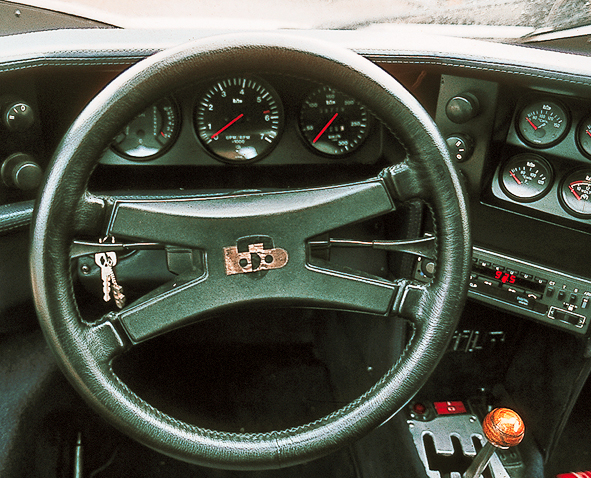Eberhard Schulz, who formerly worked as a design engineer for Mercedes-Benz, headed an engineering company that designed the CW311 concept in 1978. The car was built by one of the German Mercedes tuning firms B+B. With no interest in putting the CW311 into production itself, Mercedes-Benz allowed Schulz to produce the vehicle in 1984 under his own brand Isdera as the models Imperator 108i and Isdera Spyder (convertible version of the Imperator 108i), and with the Mercedes star badging on the front grille (later replaced with Isdera flying eagle badges).
The original Imperator 108i featured 5.0 L (5,000 cc) Mercedes-Benz M117 V8 engine which gave the vehicle a top speed of 176 mph (283 km/h) and an acceleration of 0-60 mi (97 km) in 5.0 seconds. As Mercedes-Benz developed more powerful V8 engines, they were used in the Imperator 108i. Later engines included a 5.6 L (5,600 cc) Mercedes-Benz M117 V8, a 5.6 L (5,600 cc) AMG V8 and a 6.0 L (6,000 cc) AMG V8, with both AMG engines featuring advanced 32-valve cylinder heads.
The Imperator 108i featured a rear-view periscope, creating a bulge on the roof. It also featured gullwing doors. Production ended in 1993 with a total of 30 examples produced, two of which were exported to Japan. (wikipedia)
1978 Mercedes-Benz CW3111 Concept
Isdera Imperator 108i (1984-93)
To keep weight low, the bodyshell was made of glass-fiber. Although the body looked smooth, its aerodynamic drag coefficient was a disappointing 0.38. Well, at least its frontal area was reduced by using a roof-mounted periscope as rear-view mirror. This was the most distinctive feature of the Imperator, although Lamborghini tried that already with its early Countach LP400.
Behind the cockpit was a Mercedes V8 and ZF 5-speed gearbox, both mounted longitudinally. The earliest car used a standard 5-liter V8 with 235 horsepower as you would find in Mercedes 500SEC. Subsequent cars were powered by 300hp 5.6-liter V8 (from 560SEC), 390hp 5.6-liter AMG V8 and eventually 420hp 6.0-liter AMG V8. Both AMG engines got advanced 32-valve cylinder heads. A 390hp Imperator 108i was reported to top 176 mph, accelerated from rest to 60 mph in 5.0 seconds and 100 mph in 10.8 seconds. (autozine.org)
Series 1 (1984-91)
Produced in 17 copies.
Series 2 (1991-2001)
Produced in 13 copies.
(Photos from autowp.ru, commons.wikimedia.org, kneerabbit.com & a777aa77.ru)

























































































